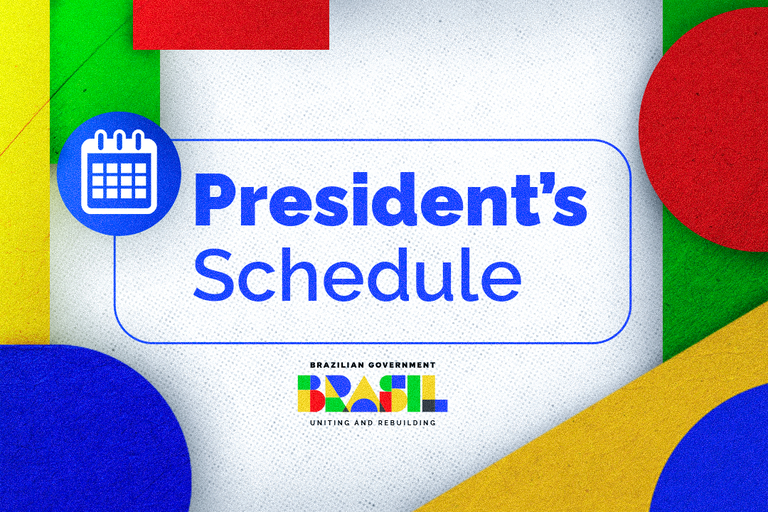Notícias
CLIMATE CHANGE
President Lula to announce drought mitigation measures in Manaus

This Tuesday, September 10, President Luiz Inácio Lula da Silva will participate in a ceremony in Manaus to announce measures to mitigate the drought in the Amazon region. The event will take place at the Superintendent’s Office of the Manaus Free Trade Zone (Superintendência da Zona Franca de Manaus/SUFRAMA), with the presence of regional mayors. Due to the dry spell, the Federal Government recognized a state of emergency in 21 of the 62 Amazonian municipalities. The measure will allow the fast mobilization of federal resources and support for these localities. Earlier in the day, the president will visit the local communities of Manaquiri and Tefé.
The announcement includes the public bidding processes for four maintenance dredging operations in the Amazon and Solimões rivers. Over five years, a total of BRL 500 million (approximately USD 88.27 million) will be invested to ensure navigability and to maintain the flow of supplies, mitigating the impact of the severe drought affecting the region. These operations are part of the Federal Government’s efforts to address the worst drought the Amazon has experienced in 45 years.
The maintenance dredging and nautical signaling works will occur in four sections of the Amazon River: Manaus-Itacoatiara; Coari-Codajás, Benjamin Constant-Tabatinga, and Benjamin Constant-São Paulo de Olivença. The current wildfire season, worsened by climate change, has coincided with one of the worst droughts in the Amazon since mid-2023. The region is facing extreme climate conditions, which increases the probability and intensity of the fires. Over 330,000 people have already suffered the impact of the emergency state in the municipalities of the Legal Amazon affected by the fires.
During the dry season, beaches and rock formations begin to appear. As a result, dredging is necessary to remove accumulated sediment from the navigation channel and restore the minimum safe depth for navigation, as required by the Brazilian Navy.
The dredging is carried out in specific areas, known as critical points—locations where sediment has accumulated, and not along the entire riverbed. In compliance with environmental licensing, the removed sediment is deposited at another location in the river, outside the navigation channel.
The installation of nautical signaling, also part of the contract, is another measure that aims to increase safety and provide guidance for the vessels regarding the paths that must be followed and the dangers to be avoided.
OPERATIONS — The Brazilian Ministry of Ports and Airports (Ministério de Portos e Aeroportos/MPor) earmarked BRL 92.8 million (approximately USD 16,38 million) For the dredging of the Manaus - Itacoatiara section of the Amazon River. The remaining sections, which will be announced this Tuesday, are in the contracting phase — final amounts and companies will be known after the bidding process is completed. The contract values are estimated at BRL 129.1 million (approximately USD 22.79 million) for Section 2 (Coari - Codajás), BRL 139.8 million (approximately 24.68 million) for Section 3 (Benjamin Constant - Tabatinga), and BRL 112.3 million (approximately USD 19.83 million) for Section 4 (Benjamin Constant - São Paulo de Olivença). Except for Section 1, located in the Amazon River, all other dredging operations are concentrated in the Solimões River. All announced operations will be executed by the National Department of Transportation Infrastructure (Departamento Nacional de Infraestrutura de Transportes/DNIT) over the course of five years.
OTHER ACTIONS — Other actions underway to mitigate the effects of the drought and dry spell in the Amazon region include the dredging of the Travessia of the Madeira River section in Humaitá, in the state of Amazonas (contract value of BRL 7.8 million, or approximately USD 1.38 million); another dredging operation in the Madeira River, in the critical sections between Porto Velho (state of Rondonia) and Manicoré (state of Amazonas), and the section where the river is crossed by the BR-230 Highway, in Humaitá (BRL 151 million, or approximately USD 26.66 million). Another action front includes the dredging of the Navigation Canal of the Tapajós River in the critical section between Itaituba and Santarém (state of Pará), with an estimated contract value of BRL 117.3 million (approximately USD 20.70 million).
HOTSPOTS — According to the most recent bulletin on wildfire combat in the Amazon and Pantanal, elaborated by the Ministry of the Environment and Climate Change (Ministério do Meio Ambiente e Mudança do Clima/MMA), 20 municipalities now concentrate 85% of the hotspots in the Amazon. From January to September 2024, they are: Apuí (Amazonas), São Félix do Xingu (Pará), Novo Progresso (Pará), Lábrea (Amazonas), Altamira (Pará), Itaituba (Pará), Porto Velho (Rondônia), Colniza (Mato Grosso), Novo Aripuanã (Amazonas), Manicoré (Amazonas), Jacareacanga (Pará), Humaitá (Amazonas), Candeias do Jamari (Rondônia), Caracaraí (Roraima), Nova Mamoré (Rondônia), Boca do Acre (Amazonas), Feijó (Acre), Nova Maringá (Mato Grosso), Aripuanã (Mato Grosso), and Ourilândia do Norte (Pará).
BURNT AREA — Between January 1st and September 1st, 2024, a total of 6,718,025 hectares (ha) were burned in the Amazon (1.6% of the biome).
COUNTER-ACTION — Up to September 2nd, a total of 189 wildfires were recorded, 38 of which were extinguished and 158 were currently active — among these, 76 are under control. The Brazilian Institute of Environment and Renewable Natural Resources (Instituto Brasileiro do Meio Ambiente e dos Recursos Naturais Renováveis/IBAMA) and the Chico Mendes Institute for Biodiversity Conservation (Instituto Chico Mendes de Conservação da Biodiversidade/ICMBio) have mobilized 1,468 firefighters to act in combating the flames.